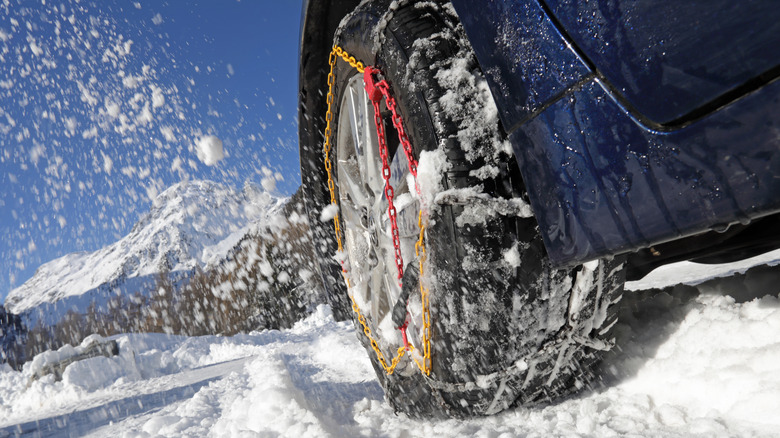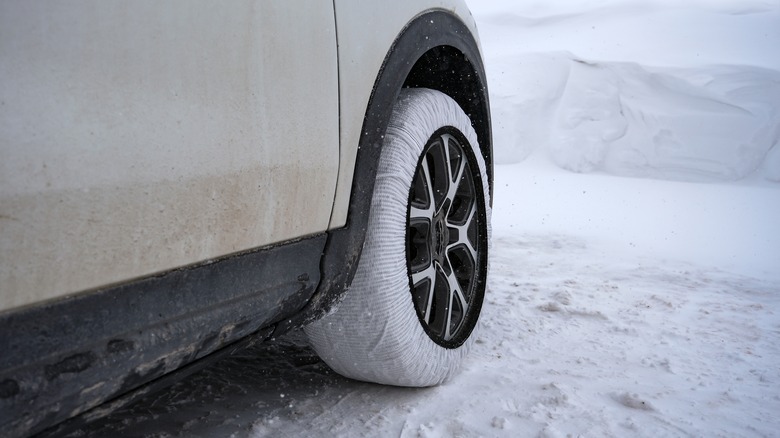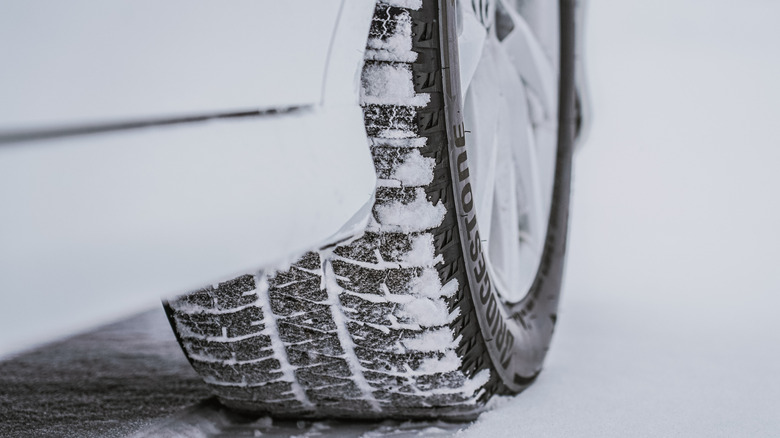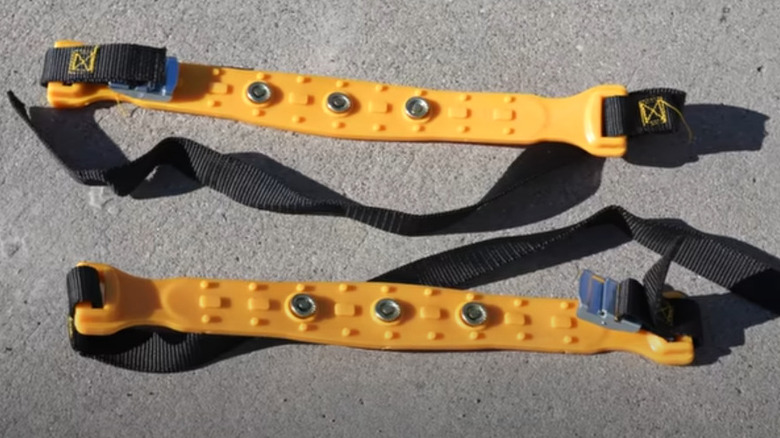3 Tire Chain Alternatives To Help Get Your Car Through Snow & Icy Conditions
Winter weather can vary greatly and quickly. Knowing what works well to keep you safe while driving in winter in your area can save time, money and your nerves.
One of the first things that comes to mind regarding winter driving is snow chains — sets of metal chains that go around a tire. The chains bite into the surface, improving traction. Chains have several drawbacks, though. By biting into the driving surface, they chew it up, especially if it's asphalt. They're noisy, too, and the ride is neither comfortable nor fast. It's highly recommended to keep your speed below 30 mph, not just because of the damage to the road, but because at higher speeds, the chains can break and damage the car.
Also, tire chains are meant to be put on your car when there's packed snow or icy roads. If you're driving mostly under other conditions, there are other options that can do a better job. My own experience comes from driving on packed snow, so I turned to testing videos to see these options in actual use under different conditions.
Snow socks don't go on your feet
Invented around the turn of the millennium, snow socks have become a popular alternative to snow chains. They are much easier to put on than chains in general, and if your vehicle has little space to reach in through the wheel wells, they are orders of magnitude easier. A test by qualitiative engineer Sergiu Gabor shows they also take up less space and are easier to pack and unpack, as they don't get tangled.
On hard-packed snow, socks can offer performance that compares to snow chains. And like chains, socks are speed limited to about 30 mph. On ice, the design of the socks will be a determining factor in the ability to dig in, and chains can be a better choice.
Snow socks are unlikely to last as long as chains, though. The fabric will wear and break in time. As they are designed primarily for driving on snowy surfaces, they will wear faster on road surfaces and gravel.
Snow tires work well where plowing doesn't
If driving on unplowed surfaces is part of your winter, consider snow tires. For a tire to grip in this situation, moving snow out of the way is paramount, so snow tires, also called winter tires (as opposed to all-season tires), have deep blocks for sinking down and tread patterns for squeezing the snow out. They're made of softer rubber compounds than other tires, which helps maintain grip on the road when all-season or all-weather tires are hardening and starting to slip.
Winter tires come in two varieties: with or without studs. Tyre Reviews demonstrated that while studded tires are very good on ice and packed snow, they lose their advantage on clear road surfaces and increase braking distances. The ride quality is also poor both in feel and noise.
Even without studs, though, winter tires fare poorly once the snow melts. Unlike all-season or all-weather tires, the soft compounds of winter tires become too soft in warmer weather, and traction suffers, so it is not recommended to use them once winter has passed. Having two sets of wheels and tires can optimize performance, but at the cost of some time, money, and effort.
Anti-skid straps work in a pinch
Along with socks and chains that are connected to each other around the wheel, there are tie wraps and anti-skid straps that get put onto the wheel individually. Most of them are easy to put on, and some manufacturers claim that the items are reusable.
Tie wraps and anti-skid straps offer the promise of easy use. Overall, that's all they are good for. However, the best of them can make a difference for a mile or two, especially under relatively mild circumstances, or if you get stuck and need a very temporary solution. If you do decide to put a set of them under your seat for an emergency, make sure you watch videos of the actual item you are buying to see how well they stay on, because, as Tyre Reviews shows, the worst will come off almost immediately.
When it comes to winter driving and how to equip your car for what Mother Nature throws at you, watching videos and seeing how the various solutions out there can help you in your environment will be one of the most important steps you can take.



